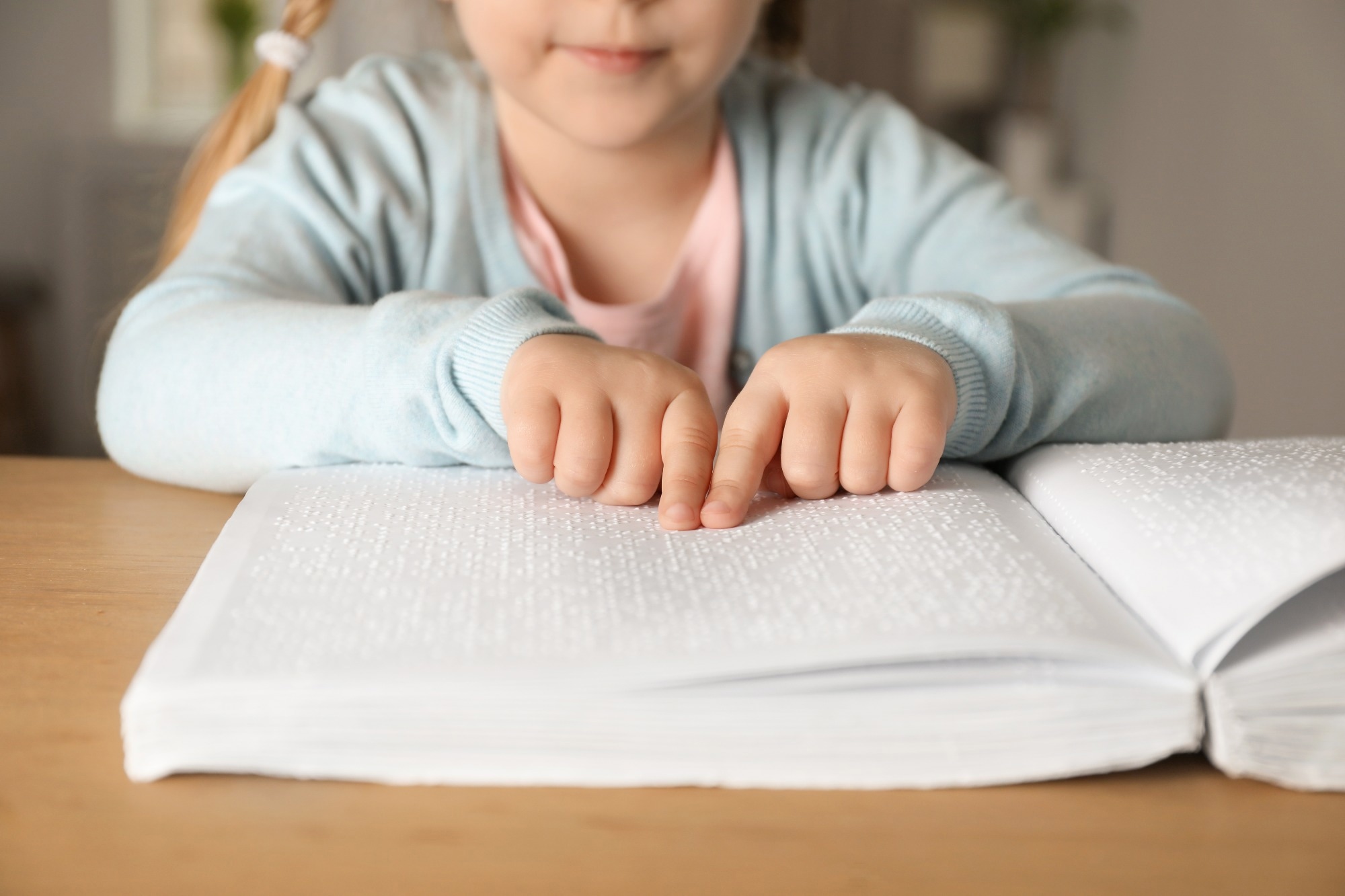In a recent study published in Nature Medicine, researchers conducted a prospective, multicenter, observational study between 14 January 2020 and 30 January 2022 in China.
 Study: Early detection of visual impairment in young children using a smartphone-based deep learning system. Image Credit: New Africa/Shutterstock
Study: Early detection of visual impairment in young children using a smartphone-based deep learning system. Image Credit: New Africa/Shutterstock
They prospectively recorded videos of 3,652 Chinese children aged 48 months and under to develop the Apollo Infant Sight (AIS) system. They validated this system twice in clinical and also in at-home settings.
AIS, a smartphone-based mobile health (mHealth) system, captured image frames of the children gazing at cartoon-like videos to identify visual impairments. It precisely distinguished 16 ophthalmic disorders in children by analyzing their facial features, gazing behavior, and ocular movements under visual stimuli using deep learning (DL) models with robust quality control design against test noises.
Background
Young children, especially infants, are incapable of undergoing standard vision tests, making it challenging to detect visual impairment in them at an early stage, if any. Though capturing some of their facial and eye movements could help ophthalmic practice, applying these in real-world settings is also challenging.
The frequency of visual problems during the first few years of life is high. Thus, timely detection of these, especially pathologically-triggered visual issues in infants, is critical to prevent or minimize long-term visual loss.
In other words, there is an urgent need for easy-to-use tools for visual impairment detection in young children that work in clinical and community settings.
About the study
In the present study, researchers developed AIS to identify 16 causes of childhood visual impairment in infants in real-world settings. They collected over 25,000,000 video frames from 3,652 children using AIS for DL model training and testing.
The system validation occurred in three stages in five clinics and at home. In the first two stages, the children enrolled in the study underwent ophthalmic examinations by clinical staff and trained volunteers collected phenotypic videos using mHealth apps installed on iPhone smartphones at each center.
They recruited children and their parents online for at-home implementation validation and tested the greater applicability of AIS in the third stage of the study. Though untrained, they recorded the phenotypic videos with their smartphones per the instructions of the AIS application. Also, they repeated data collection per the instructions of the quality control module. All children with AIS-qualified video recordings underwent ophthalmic examinations at a clinic.
Finally, the researchers validated this system under varying test noise levels and ambient interference in the real world.
Study findings
The researchers enrolled 3,652 children in this study, of which 54.5% were boys, and recorded 3,865 videos with over 25,000,000 frames for AIS development and validation.
Concerning visual impairment detection, AIS attained an area under the receiver operating curve (AUC) of 0.940 and 0.843 in internal and external validation sets, respectively.
One of the advantages of AIS was its applicability to multiple systemic and genetic ocular diseases, including ocular neoplasms and developmental abnormalities. It also detected mildly impaired children with relatively subtle phenotypic features, which are easy to miss, with high precision, further demonstrating its broader applicability.
AIS also adapted, with utmost ease, to different testing conditions and attained an AUC of 0.859 during at-home implementation. Moreover, it remained stable in 88 home environment types post just one set of fine-tuning. Indeed, it did not require regular fine-tuning even in complex environments, further favoring its use in future applications.
On top of all, AIS recorded facial appearance changes due to ocular pathologies, such as eyelid drooping in congenital ptosis with a mobile device. It is noteworthy because many ocular diseases, e.g., posterior segment abnormalities, are challenging to diagnose from phenotypic videos recorded using consumer-grade smartphones.
Conclusions
The mHealth system-based AIS demonstrated remarkable potential to be used by healthcare personnel and parents for identifying young children with a wide range of ophthalmic disorders. It showed good precision across both clinical and community settings.
In some cases, disorders of the neurological system cause cerebral visual impairment with pathology outside the eye. Thus, future studies should evaluate whether AIS could detect such visual impairments.
A smartphone-based system like AIS that precisely identifies ocular pathologies in children has several clinical implications. It could help timely refer visually-impaired children to pediatric ophthalmologists, who could initiate treatment in time. Second, it does not need expensive professional medical equipment for implementation, which eliminates one barrier to prompt testing of children at the community level.
Given the ever-changing nature of ocular diseases in young children, it could help improve vision-related outcomes, more importantly, survival rates in cases of retinoblastoma.
Most importantly, AIS screened young children with ocular disorders remotely. During the coronavirus disease 2019 pandemic, this reduced risk of exposure to ophthalmologists. Finally, given the ubiquitous use of smartphones globally, AIS could prove a promising tool that could prevent visual loss in vulnerable infants.